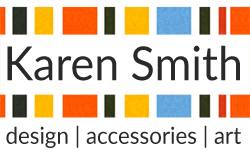Here are the details for my online class this Thursday evening, 16 July.
This week we will be using the classic shape and form of feathers to refresh ourselves on colour theory and wet in wet paint mixing techniques, whilst achieving a very popular illustrative effect.
As usual I have created a line drawing for this week, so that we use our watercolour paints to fill in the details.
Feather Line Drawing © Karen Smith, July 2020, you may download this line drawing for personal use only, this image may not be reproduced or copied in any form.
Feathers are very popular motifs at the moment especially when painted in a stylized manner., often using non representative colours. I thought I’d use a simple feather to demonstrate some colour mixing, colour theory and also watercolour techniques. These are techniques that can transfer into your more representative paintings, or you can use them for purely decorative effects.
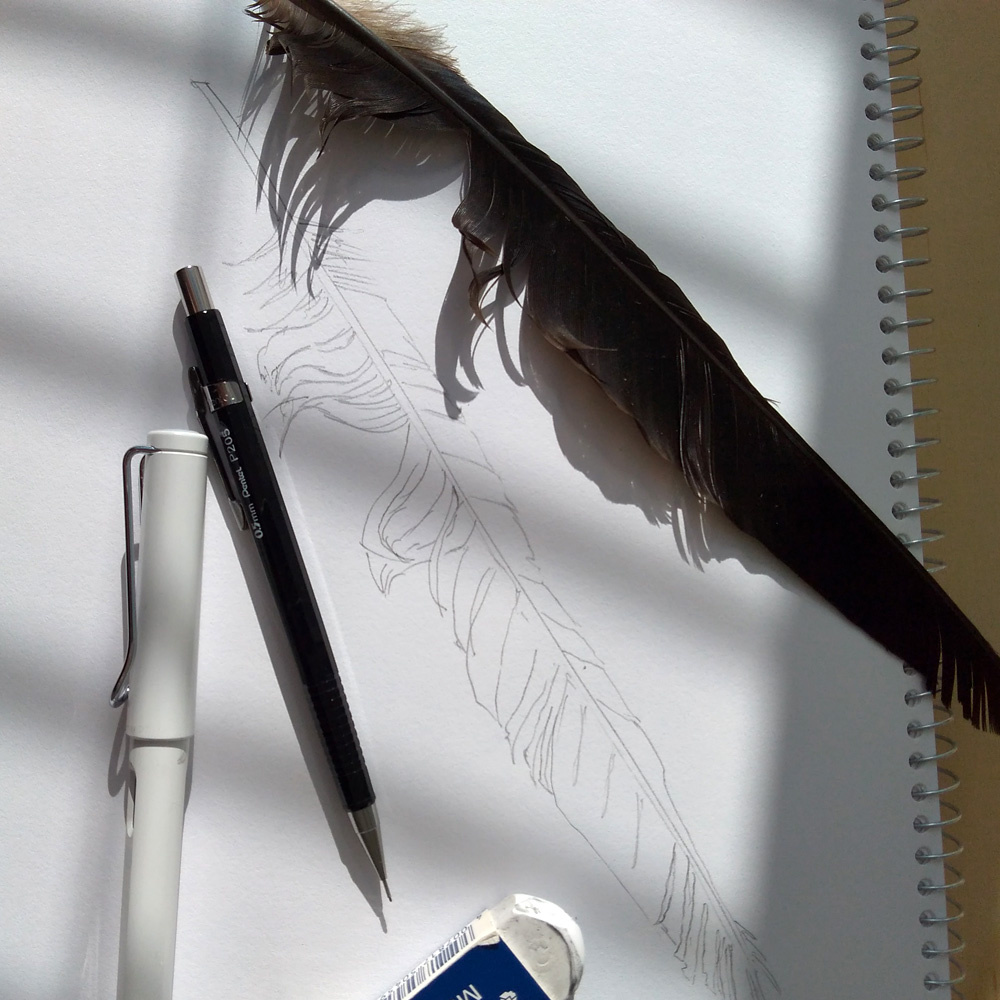
Feather ©KarenSmith 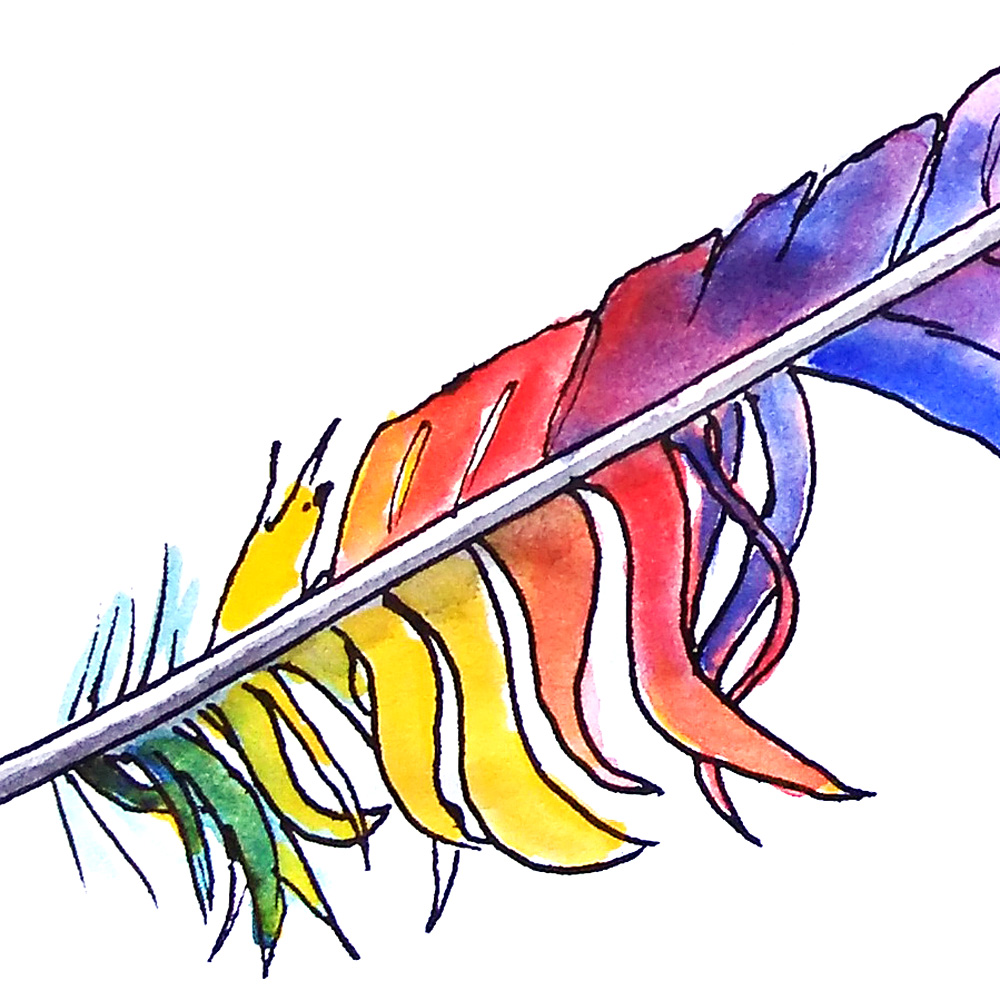
Feather Colour Theory Watercolour ©KarenSmith
This is quite a simple drawing, I paid particular attention to the scruffy nature of the feather, making sure I drew what I saw – not what I thought I saw!
There are no specific colours for this one, use your favourites!
But bring at least 3 primaries (Red, Yellow, Blue)
I recommend taping your paper down to a surface with masking tape. I tape my copier paper down to thin foam card, plywood or even some stiff card will do just as well.
This will help to keep the paper flatter, you may also want to have a hairdryer to hand to dry the layers of paint as we go along.
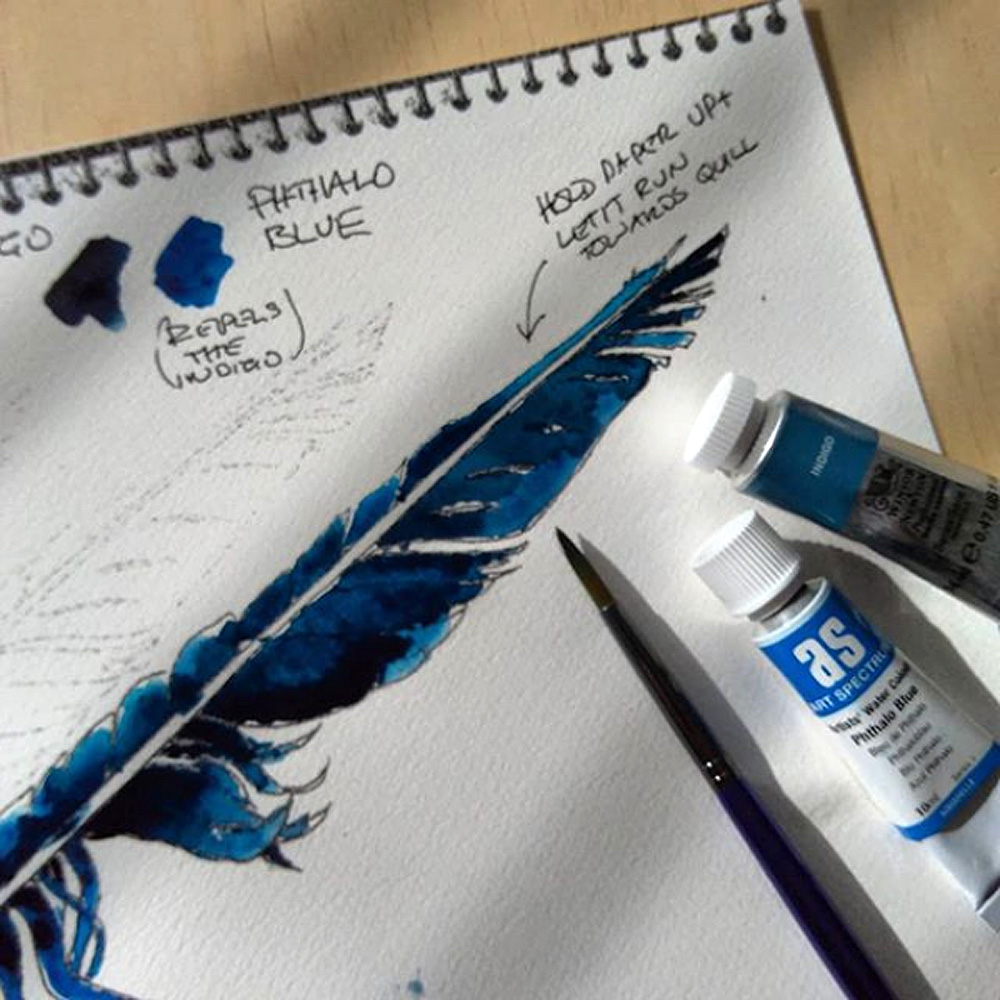
Feather Indigo Watercolour ©KarenSmith 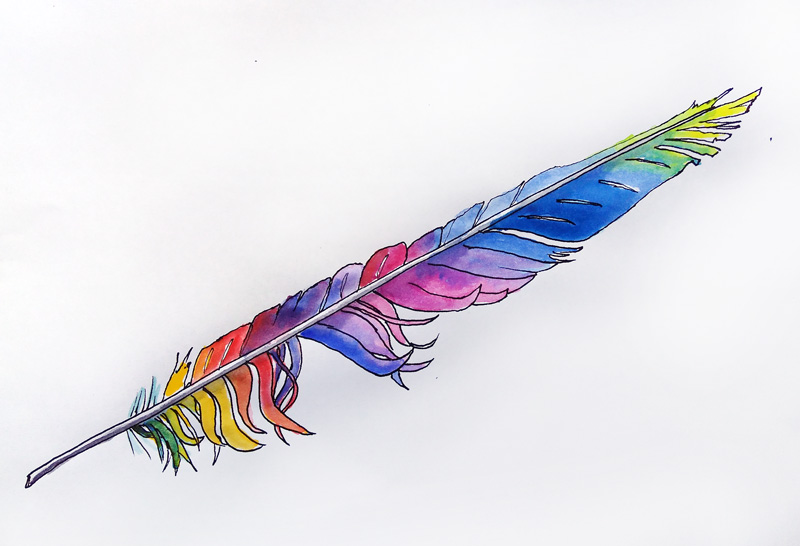
Feather Colour Theory Watercolour ©KarenSmith
For our session you will need:
- 2 copies of your Feather printout, ordinary copy paper is fine for this exercise.
Make the print image fill your A4 Portrait sheet of paper, so it can be as big as possible. - A spare piece of paper to try out your paint mixes on before applying colour to your painting, you could even print off a second copy of the line drawing for this.
- Watercolour paints: 3 primaries, even better 6 (3 cool & 3 warm)
- Size 8-12 round brush a smaller 6-8, and a fine detail brush.
- 2 pots of clean water
- Rag or kitchen roll (for wiping your brushes on)
- Hairdryer
Here are some of the watercolour paint name colours you may want to use.
Ultramarine Blue – (C33 swivel paints) Warm primary
Phthalo Blue / Cobalt Blue (29 swivel paints) Cool Primary
Crimson (C13) Cool Primary
Cadmium Red ( C11) Warm Primary
Cadmium Yellow (C05 just a little) Warm Primary
Lemon Yellow (C03) Cool Primary
Paynes Grey – (mix C43 & C37 swivel paints) Shadows
